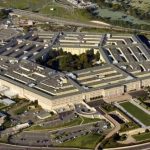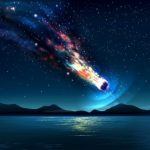 Music
Music  Music
Music  History
History 10 Less Than Jolly Events That Occurred on December 25
 Weird Stuff
Weird Stuff 10 Funny Ways That Researchers Overthink Christmas
 Politics
Politics 10 Political Scandals That Sent Crowds Into the Streets
 Weird Stuff
Weird Stuff Ten Bizarre Facts About The Doge Meme
 Our World
Our World 10 Ways Your Christmas Tree Is More Lit Than You Think
 Movies and TV
Movies and TV The 10 Coolest Stars to Set Sail on The Love Boat
 History
History 10 Things You Didn’t Know About the American National Anthem
 Technology
Technology Top 10 Everyday Tech Buzzwords That Hide a Darker Past
 Humans
Humans 10 Everyday Human Behaviors That Are Actually Survival Instincts
 Music
Music 10 Surprising Origin Stories of Your Favorite Holiday Songs
 History
History 10 Less Than Jolly Events That Occurred on December 25
 Weird Stuff
Weird Stuff 10 Funny Ways That Researchers Overthink Christmas
Who's Behind Listverse?

Jamie Frater
Head Editor
Jamie founded Listverse due to an insatiable desire to share fascinating, obscure, and bizarre facts. He has been a guest speaker on numerous national radio and television stations and is a five time published author.
More About Us Politics
Politics 10 Political Scandals That Sent Crowds Into the Streets
 Weird Stuff
Weird Stuff Ten Bizarre Facts About The Doge Meme
 Our World
Our World 10 Ways Your Christmas Tree Is More Lit Than You Think
 Movies and TV
Movies and TV The 10 Coolest Stars to Set Sail on The Love Boat
 History
History 10 Things You Didn’t Know About the American National Anthem
 Technology
Technology Top 10 Everyday Tech Buzzwords That Hide a Darker Past
 Humans
Humans 10 Everyday Human Behaviors That Are Actually Survival Instincts
10 Momentous Events That Also Occurred on July 4th
For around 250 years, the United States has celebrated its independence from Great Britain on July 4. For many, the day is marked by a day off work and filled with fireworks, parades, barbecues, store sales, and other events.
For others, July 4 is the anniversary of other occasions—some inspiring, some heartbreaking, some far from the United States borders, and some within that country. Ten momentous events that occurred on that date are listed chronologically below.
Related: 10 Weird and Magical Midsummer Celebrations
10 Construction Starts on B&O Railroad, 1828
Work on the Baltimore and Ohio (B&O) Railroad, the oldest railroad in the United States and the first train line in that country to carry passengers and goods for a fee, commenced on July 4, 1828. The railroad took its name from the city where it started to where its mainline originally ended in 1852 at the Ohio River in Moundsville, West Virginia. Subsequent add-ons to the rail line extended service to cities such as Chicago, St. Louis, and New York.
Other notable firsts occurred on the B&O Railroad: In 1844, it was the conduit for the first long-distance telegraphed message, when Samuel Morse tapped the words “What Hath God Wrought?” from the U.S. Capitol’s basement to a B&O shop in the western part of Baltimore. In 1895, it also generated electricity through a tunnel (in this case, Baltimore’s Howard Street Tunnel), marking the first time a mainline railroad accomplished such a feat.
The Chesapeake & Ohio Railway began gradually assuming greater control and ownership of the B&O in 1963, and the merger between the two companies was completed by 1987.[1]
9 Rioters Loot Abolitionist’s New York Home, 1834
New York lawmakers ruled that full emancipation of slaves would take effect by 1827, around the same time thousands of Irish people were immigrating to the United States (and some to New York City).
At least some of these immigrants expressed concern about the Blacks who also called the city home, and these fears appear to have heightened when word spread that abolitionist Arthur Tappan helped establish an anti-slavery group for women, was rumored to have married a Black woman, and, while at church, sat with an interracial member of the clergy and a friend.
A pro-slavery group broke into Tappan’s home on July 4, 1834, hauled the furniture within it to the street, and set it ablaze. Other similar attacks were planned—some even carried out—against those who supported the end of slavery. These acts of chaos ended only after New York City’s mayor requested assistance from the military, roughly a week after the Tappan house fire.[2]
8 Future United States President is Born, 1872
Many refer to the 30th president of the United States as Calvin Coolidge. However, the name given to him at his birth on July 4, 1872, in rural Vermont, was the same as his father’s: John Calvin Coolidge.
In the years leading up to his becoming president upon the 1923 death of his predecessor, the younger Coolidge was elected a council member, a general court representative, a mayor, a state senator, a lieutenant governor, a governor, and a vice president.
Coolidge’s successes as president included bestowing all Native Americans with U.S. citizenship, helping boost industrial production by 70%, and boosting take-home pay for workers by 22%. He also oversaw initiatives that allowed unemployment to average 3.3%. Not everything he tried was successful: He was unable to secure the U.S. a seat on the World Court and faced pushback when he opposed a bonus for soldiers of what is now known as World War I. In 1933, Coolidge died, less than five years after leaving the White House in the hands of his successor.[3]
7 France Formally Presents Statue of Liberty to United States, 1884
The Statue of Liberty commemorates France’s friendship with and military support of the United States in its victory over the British during the American Revolution. Originally, the French had hoped to present the statue to the U.S. on July 4, 1876, to coincide with America’s centennial.
However, two problems prevented that plan from coming to fruition. First, an 1871 treaty that ended the Franco-German War required France to pay Germany five billion francs in restitution, which took priority over funding the statue’s construction. Second, turmoil between two different Republican factions was rampant in France.
After those difficulties began to ease and the statue could be assembled, the U.S. Minister to France officially accepted the statue on July 4, 1884. The statue was disassembled, packed in more than 200 crates, left France via ship to New York City in May 1885 (it arrived stateside in June 1885), rebuilt, and dedicated in October 1886.[4]
6 Fire Ravages Part of Washington Territory, 1889
On July 4, about four months before Washington Territory was admitted into the Union as the 42nd United States, a fire of unknown origin—fireworks, a stove, a moonshine still, and arson are among the probable causes—broke out late on the night of July 4 in Ellensburg, a town of 3,000 that lies east of Seattle. The blaze destroyed a significant part of 10 city blocks and some 200 homes, leaving most of the town in ruins but no deaths.
Some of the buildings rebuilt after the Ellensburg fire still stand, including the Caldwell building, which houses the Kittitas County Historical Museum, and the Geddis building. As of 2022, the Geddis building was a mixed-use building comprising apartments and retail establishments.[5]
5 Proclamation Ends Philippine-American War, 1902
In February 1899, as the United States Senate was preparing to ratify a post–Spanish-American War treaty that would allow the U.S. to accept the Philippines from Spain, Filipino nationalists attacked Americans, marking the onset of the Philippine-American War.
Battles during the Philippine-American War claimed more than 4,200 American lives and more than 20,000 Philippine lives. In the first phase of the war, which lasted approximately nine months, the Philippine army, led by Emilio Aguinaldo, frequently fought American troops. The second phase began immediately after the first phase ended, resembled guerrilla-style attacks, and continued until the spring of 1902, by which time Aguinaldo had been captured and most of his supporters had lost their war-related enthusiasm.
Mindful of these developments, then–U.S. President Theodore Roosevelt proclaimed the Philippine-American War over on July 4, 1902. The Philippines remained a U.S. territory for another 40-plus years, finally gaining its independence in 1946.[6]
4 Deadly Heat Wave Strikes Eastern United States, 1911
Roughly four decades before air conditioning became a common feature in United States households, the northeastern and midwestern parts of the country experienced a significant heat wave before, on, and after July 4, 1911.
On July 4 alone, temperatures hit 103°F (39.4°C) in Portland, Maine, 104°F (40°C) in Boston, 105°F (40.6°C) in Vernon, Vermont, and Dennison, Ohio, and higher still in other cities. The heat was also blamed for warping railroad tracks, deforming sidewalks, canceling some Independence Day events, and was linked to a trolley crash that left 33 people hurt. By the time a thunderstorm ended the sweltering temperatures, at least 380 people had died from heat-related causes.[7]
3 Scientist Marie Curie Dies in France, 1934
These days, some organizations make concentrated efforts to increase the number of girls and women interested in science, technology, engineering, and math (commonly referred to as STEM) education and careers. Years before, Polish-born scientist Marie Curie (born Maria Sklodowska) greatly advanced the understanding of using radiation, particularly in pain management. Her examination of spontaneous radiation enabled her to share the 1903 Nobel Prize in Physics with her husband Pierre and another scientist whose research closely aligned with hers.
Eight years later, Marie won the Nobel Prize in Chemistry for discovering radium, polonium, and separating pure radium. Unbeknownst to her, Marie’s award-winning research was slowly killing her, and she died on July 4, 1934, from radiation-induced leukemia. Time magazine, in reporting her passing, stated that news outlets around the world had deemed her the greatest female scientist in history.[8]
2 Soviet Submarine Comes Close to Nuclear Meltdown, 1961
On July 4, 1961, off the southeastern coast of Greenland, the captain of a Soviet 5,000-ton, 374-foot (11-meter) long submarine called K-19 learned that the watercraft’s coolant pumps were not working, possibly due to a tear within that mechanism, making a nuclear meltdown possible.
Several members of K-19’s crew eventually managed to feed cooling water into the reactor, averting the meltdown, but not before radiation still spread throughout the watercraft. Roughly eight hours after the ordeal began, most of the crew were rescued and transported home on one of two other Soviet submarines. Within a few years, 22 of the crew had passed away from radiation-related diseases. Many other crew members would become ill or die from similar afflictions, but for years were not allowed to reveal the cause of their poisoning.
The K-19 was scrapped in 2002. Four years later, former Soviet President Mikhail Gorbachev recommended the submarine’s crew for the Nobel Peace Prize, stating that the crew members’ actions may have very well prevented World War III. However, the award went to two men for their efforts toward worldwide economic equality.[9]
1 Riots Break Out in New Jersey, 1970
Years of frustration regarding inadequate job offers, recreational amenities, and a subpar standard of living in Asbury Park, New Jersey, appeared to have found their focus when riots broke out shortly after several people threw rocks and bottles at some cars on July 4, 1970.
A curfew that Asbury Park’s mayor temporarily put into effect to subdue the chaos had little effect, as the number of rioters—as well as the type of acts committed—appeared to escalate during the next few days. Windows were smashed, fires were set, and cars and trains were damaged.
The riots ended on July 10 after a meeting between Asbury Park’s mayor, city council, and members of the community, but accounts differ regarding the meeting’s impact on spurring positive change. The riots resulted in 167 arrests, $4 million in damage, and 180 injuries.[10]








